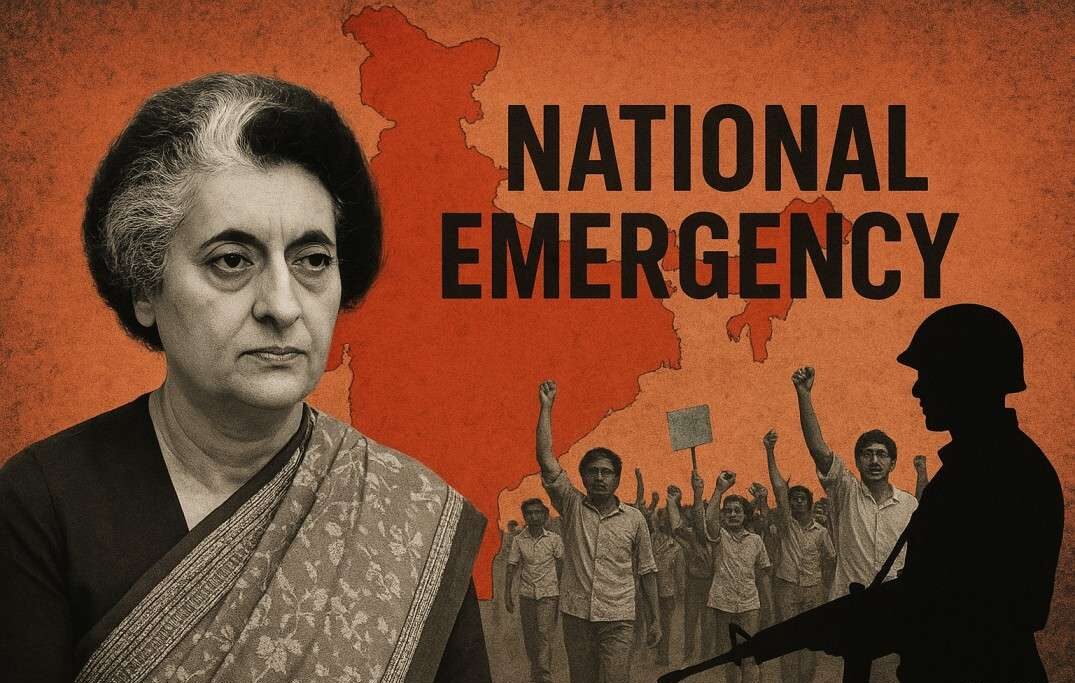1. National Emergency
1.1. Grounds of Declaration
1.2. Revocation of Emergency
1.3. Revocation Of Proclamation Of National Emergency
1.4. Effects of National Emergency
1.5. National Emergency Declared so far in India
1.6. Criticism of Emergency Provision
1.7. Amendments Relating National Emergency
1.8. Judicial Pronouncements Related To National Emergency.
1.9. Other Provisions Related to National Emergency
2. Constitutional Emergency/President’s Rule
2.1. President rule
2.2. Parliamentary Approval and Duration of President Rule
2.3. Revocation of President Rule
2.4. Subject to Judicial Review
2.5. Effects of President Rule
2.6. Use and Misuse of Article 356
2.7. Cases of Proper and Improper Use
2.8. Criticism of President Rule
2.9. Comparison between President’s Rule and National Emergency.
3. Financial Emergency
3.1. Grounds of Declaration
3.2. Parliamentary Approval
3.3. Effects of Financial Emergency.
3.4. Comparison Between Different Types of Emergencies
4. Reasons for Adoption of Emergency Provisions
5. Criticism
6. Conclusion

When I began my college journey, I often felt lost. Notes were scattered, the internet was overflowing with content, yet nothing truly matched the needs of university exams. I remember the frustration of not knowing what to study, or even where to begin.
That struggle inspired me to create Examopedia—because students deserve clarity, structure, and reliable notes tailored to their exams.
Our vision is simple: to make learning accessible, reliable, and stress-free, so no student has to face the same confusion I once did. Here, we turn complex theories into easy, exam-ready notes, examples, scholars, and flashcards—all in one place.
Built by students, for students, Examopedia grows with your feedback. Because this isn’t just a platform—it’s a promise that you’ll never feel alone in your exam journey.
— Founder, Examopedia
Always Yours ♥!
Harshit Sharma

Give Your Feedback!!
Topic – Emergency Provision (Notes)
Subject – Political Science
(Constitution of India)
Table of Contents
The Emergency Provisions are detailed in Part XVIII (Article 352-360) of the Indian Constitution. Its goal is to safeguard the state’s sovereignty, unity, and integrity, as well as its security. During a national emergency, the federal government assumes absolute authority, and the states are entirely under its control. It converts the federal government into a unitary government without the need for a formal constitutional amendment.

The Constitution stipulates three types of emergencies-
| Type | Article |
|---|---|
| National Emergency | Article 352 |
| Constitutional Emergency/President’s Rule | Article 356 |
| Financial Emergency | Article 360 |
National Emergency
Article 352 of the Indian Constitution is about the proclamation of emergency. It empowers the President to declare a state of emergency if the security of India or any part thereof is threatened by war, external aggression, or armed rebellion.
During the emergency, the central government gains special powers, and some of the fundamental rights can be suspended or restricted. It is a crucial provision aimed at addressing extraordinary situations that pose a threat to the nation’s security and stability. Provisions in Part XVII of the Indian Constitution from Articles 352 to 360 deal with Emergency.
Grounds of Declaration
- Under Article 352, the President can declare a national emergency when the security of India or a part of it is threatened by war or external aggression or armed rebellion.
- The president may proclaim a national emergency if he considers there is an urgent danger of war, external aggression, or armed rebellion, even before any of these events actually occur.
- An “External Emergency” is a national emergency that is proclaimed due to “war” or “external aggression.” On the other hand, it is referred to as an “internal emergency” when it is proclaimed due to “armed rebellion.”
- The word “armed rebellion” was added by the 44th Amendment. It was previously called an internal disturbance.
- Emergency can be declared over the complete territory of India or any part thereof. The 42nd Amendment Act of 1976 enabled the president to limit the operation of a National Emergency to a specific part of India.
- The President can declare an emergency only on the written advice of the cabinet. This means that the emergency may only be proclaimed with the cabinet’s approval and not only on the prime minister’s recommendation.
- This safeguard was added by 44th Amendment Act of 1978.
Examples
- If war is declared against any neighboring country or any other country by India, in such situation President can declare an ‘External Emergency’
- If the army, police, or any other organization revolts against the government, and the revolt is expressly armed, the insurrection might be classified as “armed rebellion.” ‘Internal Emergency’ is the term for such emergency.
|
Article 352 empowers the President to declare a state of emergency if the security of India or any part thereof is threatened by war, external aggression, or armed rebellion. |
Revocation of Emergency
- Within a month after its declaration, the declaration of Emergency must be ratified by both Houses of Parliament.
- The 44th Amendment Act of 1978 shortened the two-month time originally given to the Parliament for approval.
- Approval: Every proclamation made under Article 352 (except a proclamation revoking the previous proclamation) should be laid before each house of parliament and must be approved by them with special majority, i.e., by a majority of the total membership of that house and by a majority of not less than 2/3rd of the members of that house present and voting.
- If parliament fails to approve such a proclamation, then it ceases to be in operation on the expiry of one month after the proclamation is made.
- If parliament approves such a proclamation, then it will be in force for 6 months from the date on which it was approved by the parliament, unless revoked earlier.
- It can be approved by parliament any number of times but not beyond 6 months at a time.
- Lok sabha not in session: However, if the proclamation of emergency is issued at a time when the Lok Sabha has been dissolved or the dissolution of the Lok Sabha takes place during the period of one month without approving the proclamation, then the proclamation survives until 30 days from the first sitting of the Lok Sabha after its reconstitution, provided the Rajya Sabha has in the meantime approved it.
- The proclamation of emergency made by the president under Article 352 is subject to the judicial review and its constitutionality can be questioned in a court of law on grounds of malafide intentions.
Constitution of India Membership Required
You must be a Constitution of India member to access this content.
